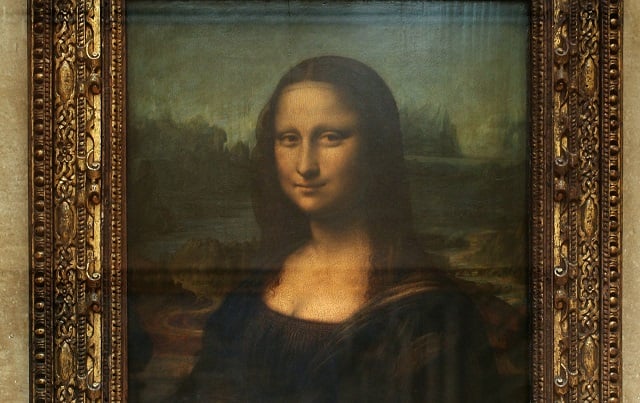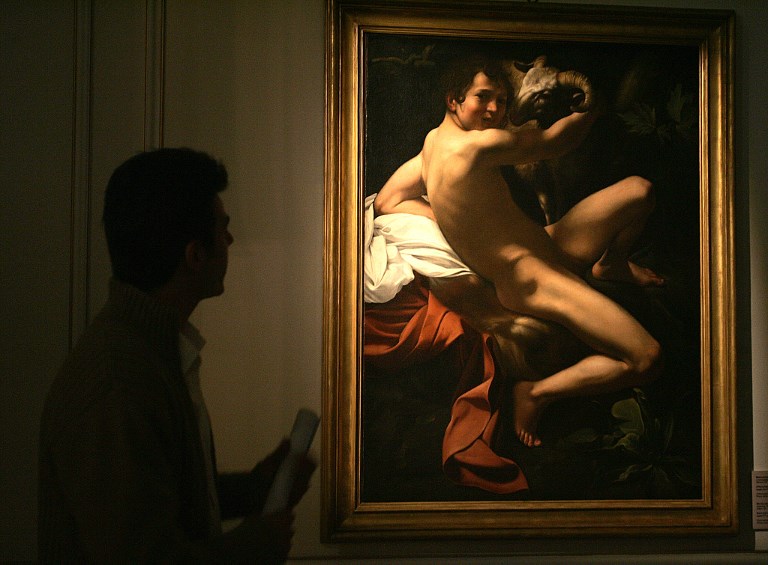Experts at the Louvre in Paris, where his masterpiece is held, have been examining a charcoal drawing known as the “Monna Vanna” which had been attributed to the Florentine master's studio.
The large drawing has been held since 1862 in the huge collection of Renaissance art at the Conde Museum at the palace of Chantilly, north of the French capital.
- New Caravaggio museum aims to separate fakes from original masterpieces
- Police in Italy fight back against theft of art from churches
- Italian food chain to fund €1 million restoration of The Last Supper
- Italian archaeologists find bones that may have belonged to the Mona Lisa
Curators from the museum believe that after a month of tests at the Louvre the “drawing is at least in part” by Leonardo.
“The drawing has a quality in the way the face and hands are rendered that is truly remarkable,” curator Mathieu Deldicque told the Figaro daily.
“It is almost certainly a preparatory work for an oil painting,” he added, with the obvious inference being that it is closely connected to the Mona Lisa.
'Almost identical'
The hands and body, Deldicque said, are almost identical to Leonardo's inscrutable masterpiece.
The drawing is almost the same size as the Mona Lisa, and small holes pierced around the figure point to the fact it may have been used to trace its form onto a canvas, he argued.
Louvre conservation expert Bruno Mottin confirmed that the drawing dates from Leonardo's lifetime at the turn of the 15th century. Tests, he told the Parisien newspaper, had already revealed that it was not a copy of a lost original.
But he said that “we must remain prudent” about definitively attributing it to Leonardo, who died in France in 1519.
- Mona Lisa's smile decoded: Science says she's happy
- Italian history buffs track down Da Vinci's living relatives
- Leonardo Da Vinci's self portrait displayed in rare public show
- Facebook apologizes for censuring 'sexual' Italian statue
The hatching on the top of the drawing near the head was done by a right-handed person. Leonardo drew with his left hand.
“It is job that is going to take some time,” he added. “It is a very difficult drawing to work on because it is particularly fragile.”
But Mottin said that they hoped to pin down the identity of the artist within two years, in time for an exhibition at Chantilly to celebrate the 500th anniversary of Leonardo da Vinci's death.
More than ten experts have been poring over the drawing for the past few weeks, using a variety of scans and other scientific methods. Their investigations have been centred on working out if the drawing was
made before or after the Mona Lisa, which was painted sometime after 1503.
The Chantilly drawing had originally been attributed to the Tuscan master when it was bought by the Duc d'Aumale in 1862 for 7,000 francs, a substantial sum at the time.
But later specialists had their doubts and thought it more likely that it came from a member of the artist's studio. Around 20 paintings and drawings of nude Mona Lisas exist in collections across the world but most have proved very difficult to date.
By Fiachra Gibbons
READ ALSO: Seven incredible art exhibitions not to miss across Italy this autumn
Photo: Aris Messinis/AFP




 Please whitelist us to continue reading.
Please whitelist us to continue reading.